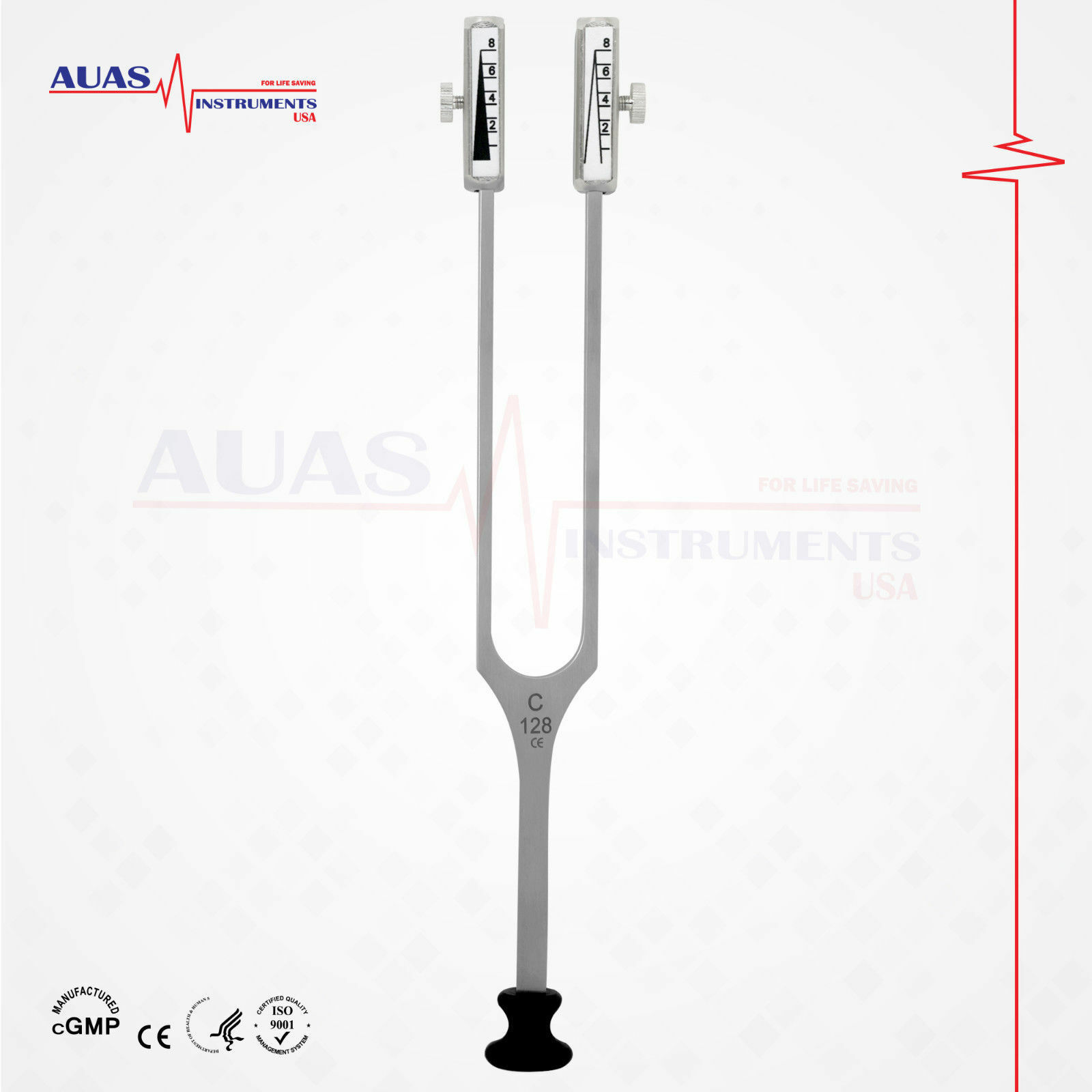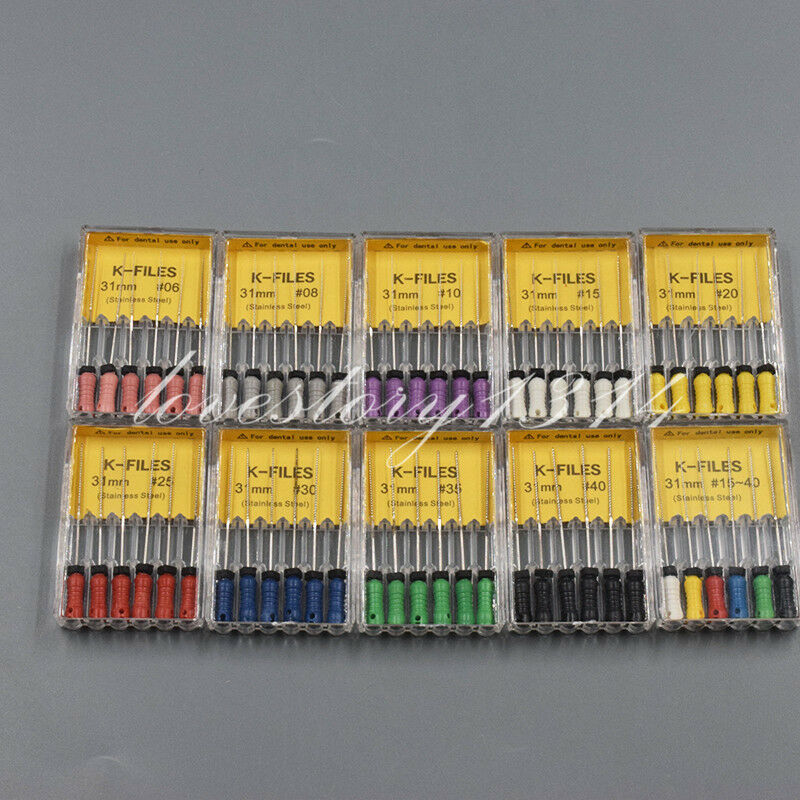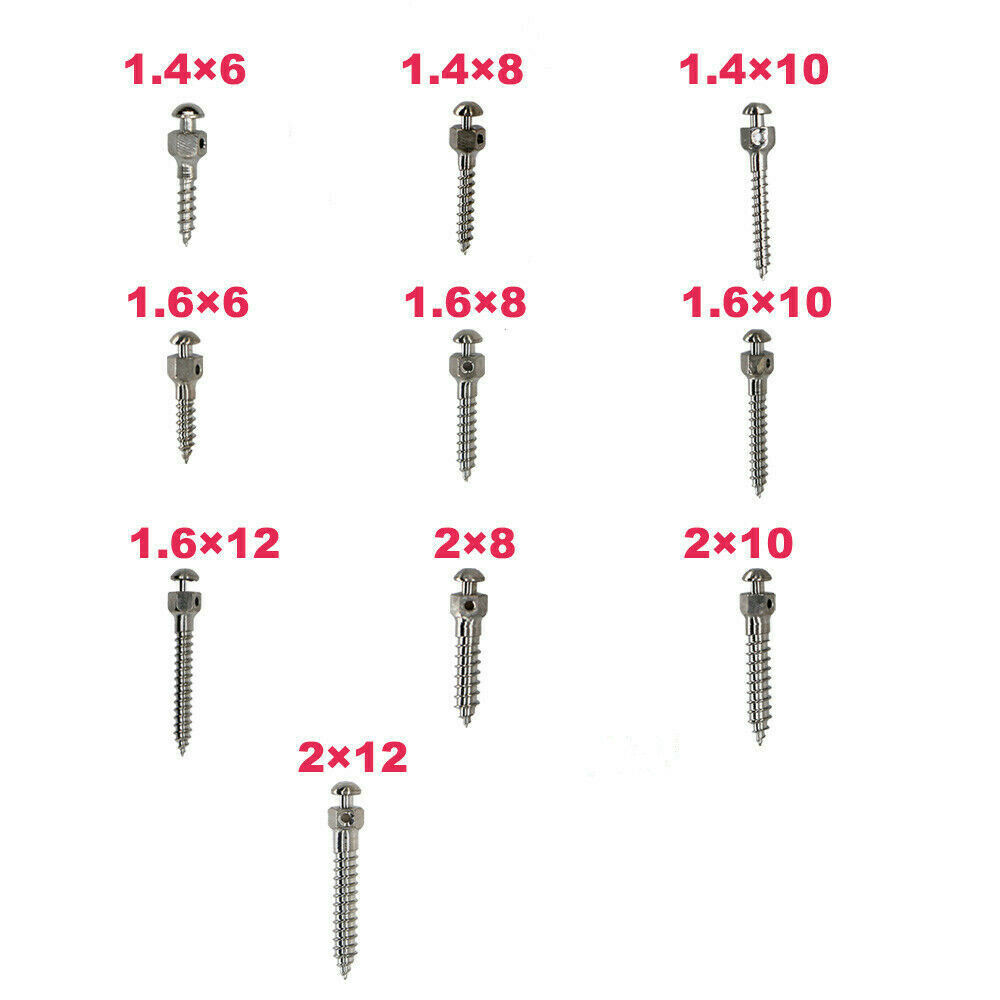-40%
TUNING FORK C 128 HZ / C 64 HZ ACCORDING TO RYDEL-SEIFFER WITH 2 FUNCTIONS. CE
$ 15.57
- Description
- Size Guide
Description
TUNING FORK C 128 HZ / C 64 HZ ACCORDING TO RYDEL-SEIFFER WITH 2 FUNCTIONSISO-CE-Certified
Brand New
Tuning fork C64 Hz with dampers for the examination of pallhypesthesia and polyneuropathy
Tuning fork C128 Hz without damper for Weber test for hearing damage
The Rydel-Seiffer tuning fork (named after Adam Rydel and Friedrich Wilhelm Seiffer) is a medical instrument that can be used to examine impairments of the peripheral nervous system or also orienting the hearing.
Tuning fork after Rydel-Seiffer
Tuning fork after Rydel-Seiffer
Version in stainless steel
C128 Hz / C 64 Hz
with removable dampers and plastic foot
for neurological examinations and sensibility test in neuropathy
Weight approx. 130 g
Dimensions (L / W): 230 x 50 mm
Diagnosis of nerve damage
In the case of a suspected nerve damage, the Rydel Seiffer tuning fork allows early detection of so-called polyneuropathy damage.
One uses the fact that the vibration sensation of peripheral nerves is impaired first (pallesthesia).
The Rydel Seiffer Tuning Fork has two scaled weights on the tines of the tuning fork.
These reduce the oscillations from 128 hertz to 64 hertz, thereby allowing the quantification of possible nerve failures.
To check the feeling of vibration you put the battered and vibrating tuning fork z.
On the tarsometatarsal joint of the big toe.
The patient indicates the time when he no longer feels the vibrations.
The examiner reads this time on the scale divided into 8 fields.
Normal value in younger people is 8/8.
With age, vibration levels up to 6/8 are still considered normal.
Smaller values should be medically clarified, as it may be an early form of nerve damage.
Damage to the peripheral nerves occur, for.
In the course of a diabetes disorder,
Diagnosis of hearing damage
With the Rydel Seiffer tuning fork, you can easily and accurately distinguish middle ear and inner ear hearing loss.
The weights are taken off.
The tuning fork then has 128 Hz. In the so-called Weber test, the vibrating tuning fork is placed in the middle of the head: Normally, the examinee feels the sound equally loud on both ears.
An uneven phonetic sensation (so-called lateralization) is either a middle ear deafness on the side, which makes the sound louder, or an inner ear deafness on the opposite side.
To distinguish these two possibilities, another test (gutter test) is made: Put the vibrating tuning fork on the bone behind the ear (mastoid).
If the examiner indicates that he no longer hears the sound, the tuning fork is put in front of the ear without being struck again.
In the case of an inner ear hearing loss, the sound is heard again, in the case of a middle ear deafness, the sound is still barely audible or no longer audible.
An inner ear hearing loss may occur in old age, after a hearing loss, after infections, after poisoning and also after some medicines - a middle ear deafness often comes with a middle ear inflammation.












